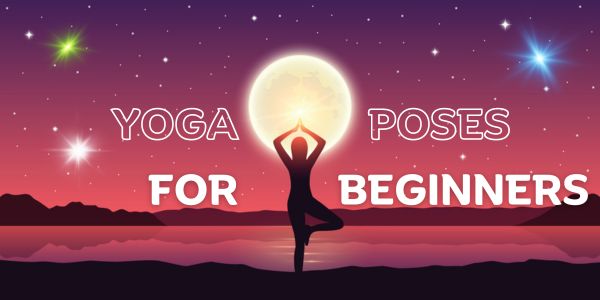
Meditation in motion includes but is not limited to activities such as Tai Chi, Yoga, Qigong, and Walking Meditation. These exercises involve a combination of physical movements, breathing exercises, and mindfulness practices that not only improve physical fitness but also promote mental and spiritual well-being.
| Section | Key Points |
|---|---|
| Introduction | ‘Meditation in Motion’ combines physical exercise with mindfulness. It includes ancient practices like tai chi, yoga, and qigong, but can also be incorporated into daily activities like walking, running, swimming, and dancing. |
| The Ancient Practices | Tai chi, yoga, and qigong promote physical and mental well-being by combining mindful movements with focused breathing. Each practice has unique approaches and benefits, but all cultivate presence and awareness. |
| Walking Meditation | A practice that involves mindful attention to the experience of walking. It can be practiced anywhere and has benefits like clearing the mind, reducing stress, improving mood, posture, balance, coordination, cardiovascular health, and energy levels. |
| Other Forms of ‘Meditation in Motion’ | Includes mindful running, swimming, and dancing. Any form of movement can be turned into a ‘Meditation in Motion’ practice by approaching it with mindfulness and intention. |
| Incorporating ‘Meditation in Motion’ into Your Daily Life | Start small, choose an enjoyable activity, practice mindfulness, be kind to yourself, and make it a regular practice. It improves physical, mental, and emotional well-being. |
| Common Challenges and How to Overcome Them | Challenges include finding time, staying present, and physical discomfort. Solutions include scheduling, starting small, being kind to oneself, using a mantra, listening to the body, and starting slowly. |
| Final Thoughts | ‘Meditation in Motion’ is a powerful practice for cultivating presence, awareness, and well-being. It is flexible, adaptable, and can be tailored to fit one’s lifestyle. Consistent effort leads to positive changes in physical, mental, and emotional well-being. |
In today’s fast-paced world, finding moments of stillness and mindfulness can be a challenge.
Yet, it is in these moments of quiet and presence that we find our true selves.
Meditation in Motion is a practice that combines the physical benefits of exercise with the mental benefits of mindfulness.
It is a way to cultivate mindfulness while engaging in physical activity.
This practice is not new; in fact, it has been a part of ancient traditions like tai chi, yoga, and qigong for centuries.
However, it is not limited to these activities. Meditation in Motion can be incorporated into a variety of exercises and daily activities, from walking and running to swimming and dancing.
In this article, we will explore the concept of Meditation in Motion, its benefits, and how you can incorporate it into your daily life.

The Ancient Practices
Tai chi, yoga, and qigong are ancient practices that have been used for centuries to promote physical and mental well-being.
Each of these practices incorporates elements of Meditation in Motion by combining mindful movements with focused breathing.
Tai Chi
Tai chi, originally developed as a martial art in 13th-century China, is now practiced worldwide as a health-promoting exercise. It involves a series of movements performed in a slow, focused manner, accompanied by deep breathing. Each posture flows into the next without pause, ensuring that your body is in constant motion. This continuous flow of movement helps to develop balance, flexibility, and muscle strength. The focus on deep breathing helps to regulate the breath, which in turn helps to calm the mind. The mindfulness component of tai chi involves paying attention to the body and breath in each moment, and letting go of distracting thoughts. This mindful attention helps to cultivate a sense of presence and awareness, both during practice and in daily life.
Yoga
Yoga is a comprehensive practice that encompasses physical postures, breathing exercises, and meditation. The physical postures, or asanas, are designed to stretch and strengthen the body, while the breathing exercises, or pranayama, help to regulate the breath and calm the mind. The meditation component of yoga involves sitting quietly and paying attention to the breath, the body, or a specific object of focus. This helps to cultivate a sense of inner peace and mental clarity. Yoga often includes practices such as mantra repetition and visualization, which can help to focus the mind and cultivate positive mental states. The holistic nature of yoga makes it an excellent practice for promoting overall well-being and mindfulness.
Qigong
Qigong is a Chinese practice that involves a combination of movement, breathing, and meditation to promote the flow of 'qi', or life energy, throughout the body. The movements in qigong are typically slow and gentle, and are designed to stretch and strengthen the body, improve circulation, and promote relaxation. The breathing exercises in qigong involve deep, diaphragmatic breathing, which helps to oxygenate the blood and calm the nervous system. The meditation component of qigong involves sitting or standing quietly and paying attention to the breath, the body, or the flow of energy in the body. This helps to cultivate a sense of inner calm and awareness.
Each of these practices offers a unique approach to Meditation in Motion, and can be a valuable addition to your mindfulness practice. The key to any mindfulness practice is to approach it with a sense of curiosity and compassion for yourself. It’s not about achieving a particular outcome, but rather about cultivating a sense of presence and awareness in each moment.
Walking Meditation
Walking meditation is another excellent way to practice Meditation in Motion.
It involves paying mindful attention to the experience of walking, and can be practiced anywhere, whether you are walking in nature, in your home, or in a busy urban environment.
The Practice
To practice walking meditation, start by standing still for a moment and taking a few deep breaths.
Feel the ground beneath your feet and bring your attention to the present moment.
As you start to walk, pay attention to the sensation of your feet lifting off the ground, moving through the air, and making contact with the ground again.
Notice the movement of your legs and the rest of your body as it maintains balance.
Pay attention to your breath and how it changes as you walk. If your mind starts to wander, gently bring your attention back to the sensation of walking and your breath.
The Benefits
Walking meditation has many benefits. It is a simple and accessible way to incorporate mindfulness into your daily life.
It can help to clear your mind, reduce stress, and improve your mood. Additionally, it can help to improve your posture, balance, and coordination.
Because it involves physical activity, it also has the benefits of exercise, such as improved cardiovascular health and increased energy levels.
Practical Tips
- Start with a short period of time, such as 10 minutes, and gradually increase the duration as you feel comfortable.
- Try to maintain a slow and steady pace. This will help you to stay present and focused on the experience of walking.
- If you find it difficult to maintain your attention on the sensation of walking, you can use a simple mantra, such as “lifting, moving, placing”, to help focus your mind.
- Practice self-compassion. It’s normal for your mind to wander. When it does, gently bring your attention back to the present moment without judgment.
Why Use a Mantra?
A mantra is a word or phrase that is repeated during meditation to help focus the mind. The act of repeating a mantra can help to quiet the mind and keep you anchored in the present moment.
Why “Lifting, Moving, Placing”?
The mantra “lifting, moving, placing” describes the three distinct movements involved in taking a step:
- Lifting: As you lift your foot off the ground.
- Moving: As you move your foot forward through the air.
- Placing: As you place your foot back down on the ground.
Repeating this mantra as you move helps to keep your attention focused on the physical sensations of each step.
It encourages you to be fully present with each movement, rather than letting your mind wander to other thoughts or distractions.
How to Use the Mantra
As you engage in your ‘Meditation in Motion’ practice, silently repeat the mantra to yourself in time with your movements.
For example, in walking meditation, as you lift your foot, silently say to yourself “lifting”. As you move your foot forward, say “moving”. And as you place your foot back down on the ground, say “placing”.
The goal of walking meditation is not to get to a particular destination, but to be fully present and aware during the journey. By incorporating walking meditation into your daily routine, you can cultivate mindfulness and enjoy the many benefits it has to offer.
Other Forms of Meditation in Motion
While tai chi, yoga, qigong, and walking meditation are some of the most well-known forms of Meditation in Motion, there are many other activities that can also be practiced mindfully.
Mindful Running
Running is often considered a form of moving meditation. To practice mindful running, focus your attention on the sensation of your feet hitting the ground, the rhythm of your breath, and the movement of your body. Try to maintain a steady pace and stay present with each step. If your mind starts to wander, gently bring your attention back to the sensation of running.
Mindful Swimming
Swimming can also be a meditative activity. Focus on the sensation of the water against your skin, the rhythm of your strokes, and your breath. Try to maintain a steady pace and stay present with each stroke. If your mind starts to wander, gently bring your attention back to the sensation of swimming.
Mindful Dancing
Dancing is another activity that can be practiced mindfully. Whether you are dancing alone or with a partner, pay attention to the movement of your body, the rhythm of the music, and your breath. Try to stay present with each movement and enjoy the experience of dancing.

While tai chi, yoga, qigong and walking meditation are common forms of Meditation in Motion, there are countless activities that can be practiced mindfully.
Essentially, any form of movement can be turned into a Meditation in Motion practice by approaching it with mindfulness and intention.
For example, activities such as cycling, hiking, gardening, or even doing household chores can be practiced as Meditation in Motion.
The key is to pay attention to the sensations in your body, the rhythm of your breath, and the thoughts and feelings that arise during the activity.
Incorporating Meditation in Motion into Your Daily Life
Start Small
If you are new to Meditation in Motion, start with a short period of time, such as 10-15 minutes, and gradually increase the duration as you feel comfortable. It's more important to establish a regular practice than to do a long session once in a while.
Choose an Activity that You Enjoy
The best Meditation in Motion practice is one that you enjoy and that feels good for your body. Whether it's tai chi, yoga, qigong, walking meditation, running, swimming, dancing, or any other activity, choose one that brings you joy and helps you to feel connected to your body.
Practice Mindfulness
As you engage in your chosen activity, try to stay present with each movement and each breath. Pay attention to the sensations in your body, the rhythm of your breath, and the thoughts and feelings that arise. If your mind starts to wander, gently bring your attention back to the present moment without judgment.
Be Kind to Yourself
It's normal for your mind to wander or for your body to feel uncomfortable at times. When this happens, practice self-compassion. Be kind to yourself and adjust your practice as needed. Remember, the goal is not to achieve a particular outcome, but to cultivate a sense of presence and awareness.
Make it a Regular Practice
The benefits of Meditation in Motion are cumulative, meaning they build up over time. Try to make it a regular practice, even if it's just for a few minutes each day. Consistency is key to developing a meaningful and rewarding routine.

Final Thoughts
Meditation in Motion is a powerful practice that combines physical movement with mindfulness to cultivate a greater sense of presence, awareness, and well-being.
Whether you choose to practice Tai Chi, Yoga, Qigong, or any other form of mindful movement, you are taking a positive step towards a healthier, more balanced life.
Remember, the goal is not to achieve perfection, but to cultivate a sense of presence and awareness.
Be kind to yourself, listen to your body, and adjust your practice to suit your own needs and circumstances.
While it may take time to see the full benefits of your practice, with consistent effort, you will likely notice positive changes in your physical, mental, and emotional well-being.
Thank you for taking the time to read this article.
May your practice bring you peace, joy, and a greater sense of connection to yourself and the world around you.
Frequently Asked Questions
How is Meditation in Motion different from regular exercise?
While regular exercise focuses on physical fitness, Meditation in Motion focuses on both physical and mental well-being. It involves mindful movements and focuses on being present, aware, and connected to your body and mind.
Do I need any special equipment or clothing for Meditation in Motion?
No special equipment is required. Comfortable, loose-fitting clothing is recommended to allow for free movement. For some practices like yoga, a mat can be helpful but is not necessary.
How often should I practice Meditation in Motion?
The frequency of your practice depends on your individual circumstances and goals. However, as with any practice, consistency is key. Even just a few minutes each day can make a difference.
Can I practice Meditation in Motion if I have a physical injury or limitation?
It is always recommended to consult with a healthcare professional before starting any new physical activity, especially if you have any injuries or limitations. However, Meditation in Motion can often be adapted to suit individual needs and abilities.
I have never meditated before. Can I still practice Meditation in Motion?
Absolutely. Meditation in Motion is suitable for all levels of experience, including beginners. It is a great way to start incorporating mindfulness and meditation into your daily routine.
Do I need to learn a specific routine or sequence of movements for Meditation in Motion?
While there are specific sequences of movements in practices like Tai Chi and Yoga, it is not necessary to learn a specific routine to practice Meditation in Motion. The key is to be present and mindful of each movement, regardless of the specific activity.
You may also be interested in: 1. How to Live a Simple Life & Be Happy 2. Manifesting Blueprint [Learn to Manifest What You Want] 3. How to Be Mindful in Everyday Life 4. Active Meditation vs Passive Meditation







